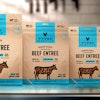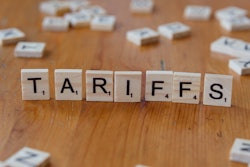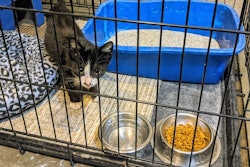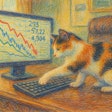
The global pet industry is set to grow more than 45% over the next five years, surpassing US$500 billion by 2030, according to Bloomberg Intelligence’s newly released 2025 Pet Economy Report. Diana Rosero-Pena, equity research analyst with the firm, shared the findings at Petfood Forum 2025, highlighting steady demand for pet food, changing spending behaviors and the continued dominance of the U.S. market.
“Pet owners are expecting to increase their spending across all categories in the industry compared to a year ago,” Rosero-Pena said. While inflation has driven up prices, the survey showed pet parents are still prioritizing their animals' needs — especially when it comes to food, toys and grooming products.
However, economic pressures are having an effect in some areas. “Financial pressures seem to be affecting vet visits,” she noted, with around 20% of dogs and 30% of cats reportedly missing annual wellness checkups. Still, healthcare remains one of the industry’s most promising long-term drivers.
Pet food specifically remains central to the pet economy’s expansion. Bloomberg Intelligence estimates global pet food sales will grow 36% to reach $145 billion by 2030, with the U.S. accounting for $68 billion of that. Premium pet food is expected to grow even faster — by 40% — and make up nearly 60% of the U.S. market by the end of the decade.
2025 will experience moderate growth
Rosero-Pena cautioned that 2025 may be a more moderate year for growth. “For 2025, we see the U.S. growing only 5% compared to the 6%–7% range during the pandemic,” she said. Consumers are becoming more strategic in their spending, which has impacted the premium segment in particular. “People are trading down from premium to a more affordable price point," she said.
For now, value-tier pet food may see stronger growth than premium, at 6% versus 5% in 2025, but that trend is not expected to last. “By 2030, value products will probably only grow 36%,” Rosero-Pena said, while premium’s share will continue rising.
The role of e-commerce
E-commerce is also a key force shaping the market. “Convenience seems to be the driving force,” Rosero-Pena said. “Thirty percent of respondents mentioned online as being their preferred purchasing format — up from 23% just three years ago.” Amazon and Chewy continue to dominate, though traditional retailers like Walmart and Petco are gaining ground.
Globally, the U.S. will remain the largest market, accounting for around 40% of industry sales. Europe is projected to hold roughly a third of the market, while China could grow more than 50% to reach US$49 billion, with Alibaba maintaining a stronghold in online sales.
Despite some near-term headwinds, Rosero-Pena emphasized long-term optimism. “The humanization of pets is very important — the integration of animal companions into the family composition,” she said. “If you think back in the ’50s and ’60s, if a family had a dog, they usually slept outside. Now they sleep inside — and probably in your bed.”
Rosero-Pena also noted cats may be gaining ground. “We’re seeing scanning data in the U.S. showing that sales growth for cat food and snacks is outpacing that of dogs,” Rosero-Pena said. “It seems the cat distribution system is working overtime.”
Diana Rosero-Pena is a seasoned company research analyst specializing in packaged food and food retail across North America, bringing a wealth of knowledge from her role at Bloomberg Intelligence. Her session, 2025 Pet Economy Report, took place Tuesday, April 29, during Petfood Forum in Kansas City.


















